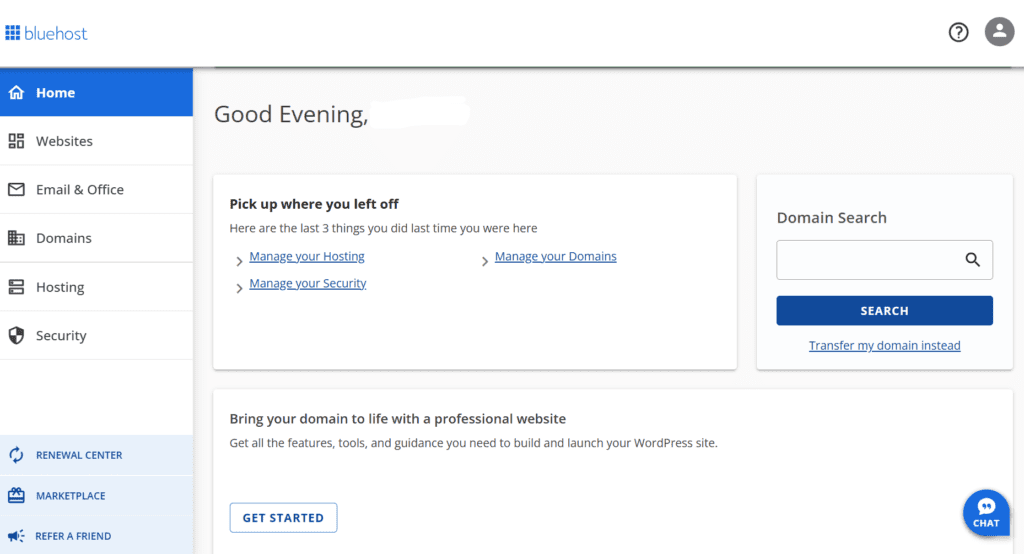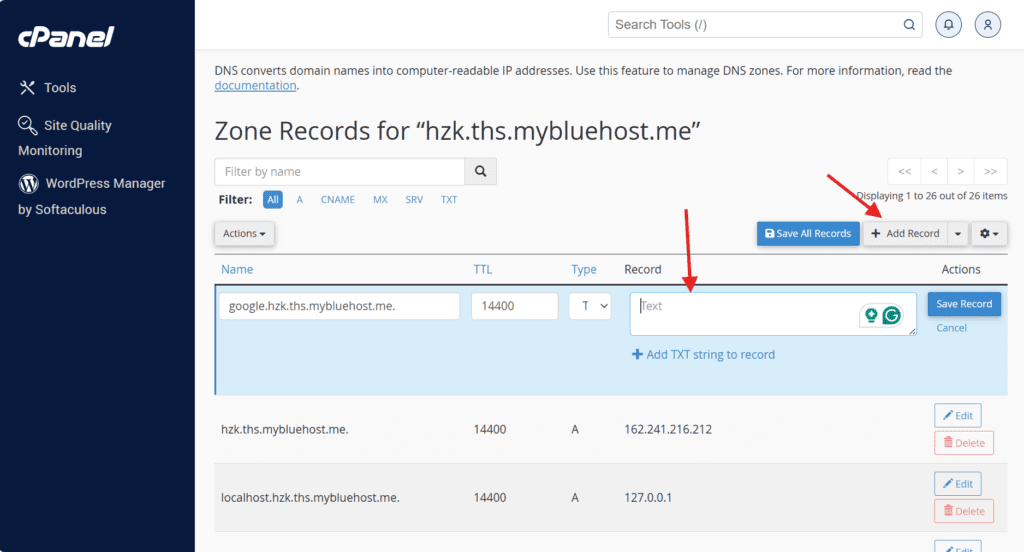Key highlights
- Learn how to quickly index your website using manual methods like Google Search Console and Bing Webmaster Tools to boost visibility faster.
- Explore multiple submission strategies, including XML sitemaps and the Yoast SEO plugin to streamline search engine verification.
- Understand the pros and cons of submission services so you can avoid costly, outdated tools that don’t guarantee better indexing.
- Uncover SEO-friendly practices like internal linking, social media sharing and sitemap updates to maintain consistent indexing.
- Track and optimize your site’s performance with tools like the Bluehost SEO Checker to stay ahead in search rankings and gain helpful insights.
Website created successfully! But wait – no clicks, no visitors, no clients! Sounds frustrating, right?
This is where search engine site submission plays a huge role. Knowing how to submit website to search engines is crucial for every site to grow, attract traffic and rank better on search engine result pages (SERPs).
Getting your site noticed isn’t automatic, but it is easier than you think.
In this guide, we’ll explore practical methods for optimizing your website’s indexing, enhancing its visibility and reach.
Whether you’re looking to submit website to Google or perform URL submission to Bing, this comprehensive guide covers all the techniques you need. From how to submit url to search engines effectively to Google search engine submissions best practices.
Let’s dive in!
Do you need to submit website to search engines?
Yes, you should submit your website to search engines.
Manual submission helps major search engines discover your website faster, especially if it’s new or has limited backlinks.
Although search engines like Google crawl websites automatically, submitting your site directly ensures it’s recognized quickly and accurately. It also improves visibility for every page on your site.
To make your website discoverable and reach your target audience, website submission is essential. Here’s how submitting your site benefits you:
- Speed up the indexing process so your pages appear in search results sooner and are more accessible to new visitors.
- Ensure all pages, including new or updated content, are recognized by search engines. Keeping your content updated in xml format helps maintain accuracy.
- Provides structured data through sitemaps and metadata, helping search engines better understand your site’s layout.
- Improves visibility across multiple platforms, including Google, Bing, Yahoo and other search engines, by ensuring new links are properly indexed.
The process of adding a website to search engine databases ensures your content reaches the right audience. Whether you need to submit blog to search engine platforms or submit your site to search engine directories, the methods covered in this guide apply to all website types.
How to submit website to search engines: Google?
Google search engine submissions are the most critical step for online visibility. The URL submission process through Google Search Console is straightforward and free. By learning how to submit a website to search engines like Google, you ensure that your content is discovered quickly. Google Search Console (GSC) is a free tool that allows website owners to track indexing, search performance and fix technical issues.
To add your site:
- Check Google Search Console website and click on the button, ‘Start now’.

- Next, select the property type. Here, you’ll find two options:
- Domain: Enter your domain name to retrieve data from all URLs. DNS verification is required for this option.
- URL prefix: it has several verification techniques and is for a particular page.
We will first start with the Domain option.
- Type the ‘URL’ and click on ‘Continue’.

- To verify ownership, copy the ‘TXT record’ and enter it into your ‘DNS settings’. Then return to Search Console to ‘Verify’.

- Next, log in to your Domain name provider. For this guide, we are using the Bluehost dashboard.

- Click on ‘Hosting’ and then click on ‘CPANEL’ in quick links.

- This is cPanel page, scroll down and click on ‘Zone editor’.

- Click on ‘Manage’ and a window with list of zone records will be open.

- Now, click on ‘Add Record’ and fill the row by entering the code you copied from Google in the text column and click on ‘Save Record’.

- Return to the search console website and click on ‘Verify’.

- Once verified, Google will confirm your ownership.

Looking for a simpler method? You can verify your site more easily using Yoast SEO. This streamlined approach requires just a few quick steps.
Verifying your site in Google Search Console with Yoast SEO
Yoast SEO is one of the most trusted WordPress plugins for simplifying and enhancing your website’s SEO.
Yoast SEO simplifies search engine site submission by handling verification codes automatically. This tool eliminates complex url submission procedures and makes it easy to submit site to search engines without technical knowledge.
It features an intuitive dashboard with in-depth content analysis, keyword recommendations and readability checks to help you optimize for both users and search engines.
With actionable insights, you can easily fine-tune meta tags, headlines and images to boost rankings and drive more organic traffic. Yoast makes it easy to submit to search engines without touching any code, making SEO more beginner-friendly.
A key advantage of Yoast SEO is its seamless integration with Google Search Console. This removes the hassle of manual coding and lets you verify site ownership directly within the plugin.
At Bluehost, we make search visibility easy from day one. With our WordPress hosting, built-in tools like Yoast SEO, automated XML sitemaps and the Bluehost SEO Checker, you can submit your site to search engines in just a few clicks – no coding needed. Bluehost’s platform streamlines SEO setup, domain verification and indexing—perfect for beginners launching their first site.
- Repeat the above two steps and this time we will use the URL prefix option. Write the URL and then click on ‘Continue’.

- Copy the meta tag

- Now, log in to the WordPress dashboard.

- Then, go to ‘Yoast SEO’ which appears in the left menu bar, click on ‘Settings’ and then ‘Site connections’. Then a window will appear that has different site connections. Paste the verification code in Google field. In last, click on ‘Save Changes’.

- Return to Google Search Console and click on ‘Verify’.

How to check your verification tag in Search Console
After you’ve completed the verification process, you can easily review your meta tag. The steps are shown below:
- Visit Google Search Console and open the ‘Settings’

- Click ‘Ownership Verification’ and click ‘HTML tag’ to check the verification tag

Also read: How to Verify Website Ownership on Google Search Console with Yoast or DNS Records
Submit your XML sitemap
A sitemap is an XML file essential for url submission that lists all the pages on your website, helping Google understand your site’s structure and facilitating efficient crawling.
To submit your sitemap:
- Create a sitemap:
- If you’re using WordPress, plugins like Yoast SEO can generate a sitemap automatically.
- Typically, your sitemap will be located at https://www.[example]. com/sitemap_index.xml. For example, this is sitemap for Bluehost:

- Access GSC:
- Navigate to the ‘Sitemaps’ section in the left-hand menu.

- Submit sitemap:
- Enter your sitemap URL (for example, sitemap_index.xml), then select Sitemaps to verify that it’s been received and processed.
- Hit the ‘Submit’ button.

Submitting a sitemap ensures Google is aware of all your site’s pages, especially new or updated ones.
Note: Google does not require submission, but using Google Search Console significantly speeds up discovery and gives you full control over indexing.
How to submit your website to Bing?
Beyond Google, submitting website to search engines like Bing expands your reach since Yahoo search results are powered by Bing. Additionally, verifying your site with Yandex ensures that privacy-conscious users can easily find your content.
Utilizing Bing Webmaster Tools
- Go to Bing Webmaster Tools and ‘Sign In’ with your Microsoft account.

- Add your site details manually. If you sign in using a Google account and have already verified your website on Google Search Console, click the ‘Import’ button.

- Click on the ‘Sitemaps’ from the left menu and type your URL in the add a new sitemap field. Then click ‘Submit’.

- Once Google successfully completes and verifies the sitemap then the status will turn into ‘Success’.

How to submit your website to Yahoo?
By submitting your website to Bing, it automatically appears in Yahoo search results as well as Yahoo’s search engine results are powered by Bing.
You can use Yoast SEO to verify your website with different search engines. The same steps you used for Google Search Console work for these other platforms too.
Visit each search engine where you want to submit your website. Add your site, copy the verification code and paste it into the appropriate field in Yoast SEO. Finally, click “Save Changes” to complete verification.

Note: Yahoo isn’t listed because its results come from Bing.
How to submit your website to Yandex?
Most search engines, including Google, Bing and Yandex, follow similar sitemap submission standards. However, targeting Yandex is worthwhile if your audience is in Eastern Europe, as its ranking algorithms differ .
- Sign up for Yandex Webmaster Tools.

- Click on ‘Add site’ and then write your URL

- You will receive a verification code in the meta tag, copy that code.

- Now, log into Bluehost WordPress dashboard and follow the above same steps that done for Google Search Console.
How to submit your website to DuckDuckGo?
You don’t need to submit to search engines like DuckDuckGo manually. The major search engines pull their results from over 400 sources, including Bing, Yahoo and Wikipedia. So, when you submit your site to Bing using Bing Webmaster Tools and request indexing, your pages automatically become eligible to appear on DuckDuckGo.
How to check if a website is indexed?
After you submit website to Google or other search engines, it’s important to verify that your url submission was successful. Here are reliable methods to confirm your search engine site submission worked.
Google Search Console: URL inspection tool
Google Search Console (GSC) provides a comprehensive way to check the indexing status of your web pages. Here’s how to check the status:
- Log in to your GSC account and enter the specific URL you want to check in the ‘Inspect any URL’ field.

- GSC will display whether the URL is indexed and provide details on any issues preventing indexing.

Google search operators
- You can use Google’s search operators directly in the search bar. To check, type site: [yoursitename].com in the search box. For the Bluehost example, we would type site: bluehost.com.

- If the site is indexed, then it will appear on the homepage as shown above.
- For a specific page, use site: [yourdomain].com/page-url. If results appear, the page is indexed; if not, it may not be indexed yet.
Are website submission services worth it?
Usually, no. Most search engines discover new content automatically. Learning how to submit a website to search engines manually is more effective than paying for automated services. Submission services often overpromise and underdeliver. Here’s why:
Search engines discover content naturally
Modern search engines like Google and Bing have sophisticated algorithms that crawl the web regularly. If your website has quality content and backlinks, search engines will likely find and index it without manual submission.
Manual submission is free and straightforward
Submitting your website to search engines manually is a simple process that doesn’t require any payment. For example, you can submit your sitemap directly through tools like Google Search Console and Bing Webmaster Tools.
Potential risks with submission services
Some submission services may use outdated or unethical practices, such as submitting your site to low-quality directories, which can harm your site’s reputation and SEO. Additionally, paying for such services doesn’t guarantee faster or better indexing.
Best practices for ongoing website indexing
Follow these best practices to keep your website optimized. Once you submit website to search engines, it stays ready for users and search engines.
Updating and resubmitting your sitemap
A sitemap acts like a roadmap for search engines, guiding them to all the important pages on your website. If your site changes frequently, such as adding blog posts, updating products or removing outdated pages your sitemap should reflect those updates.
Our Bluehost WordPress hosting plans include Yoast SEO, which automatically generates and updates your XML sitemap. This eliminates manual work while ensuring search engines always have access to your latest content. We’ve optimized our servers to notify Google and Bing immediately when your sitemap changes, helping your new pages get indexed faster.
Want faster indexing and better visibility? Bluehost WordPress hosting plans include auto-generated sitemaps, preloaded verification tools and Google/Bing integration – built for search success from launch.
Using internal linking strategies to boost crawlability
Interlinking relevant pages improves the user experience and helps search engines crawl and index pages more efficiently. This strategic approach helps in efficiently indexing every page, ensuring that all your valuable content is easily discoverable.
Also read: Mastering Internal Links: Essential Strategies for SEO
Tracking performance with the SEO Checker tool
Staying on top of your website’s SEO health is key to long-term success. Website SEO Checker tool gives you detailed insights into your site’s indexing performance, keyword rankings and areas for SEO improvement. With these data-driven insights, you can fine-tune your strategy and consistently optimize your website for adequate visibility, making sure you’re always one step ahead in the SEO game.
Leveraging social media and backlinks for better indexing
Sharing your content on social media platforms increases its exposure and sends strong signals to search engines about its relevance and credibility. Moreover, earning high-quality backlinks from reputable sites acts like a vote of confidence, further accelerating the indexing process and boosting your site’s authority.
Monitoring robots.txt and technical health
Your robots file (robots.txt) tells search engines which pages to crawl and which to avoid. If you’re wondering why certain pages aren’t indexing, check that your robots.txt isn’t accidentally blocking important content. The easiest way to test this is through Google Search Console’s robots.txt Tester tool, which provides additional information about crawl permissions. You can also subscribe to email alerts to receive notifications about critical crawl errors.
Organizing content with strategic sitemap architecture
As your website grows, consider using multiple sitemaps divided by content type – blog posts, products and category pages. This organized approach makes it easier to submit site to search engines because each sitemap stays focused and manageable. When you submit url to search engines through categorized sitemaps, search engines can better understand your site’s hierarchy. You can monitor performance using the site search console’s Sitemaps report, which shows submission dates and indexing success rates.
Final thoughts
Your website is live. Your content is ready.
But if search engines can’t see it, your audience can’t either.
Submitting your site serves as your gateway to visibility, not just a technical task. You now know how to use Google Search Console, Bing Webmaster Tools and Yoast SEO to get indexed properly. You control your site’s visibility instead of relying on luck.
And the best part? You don’t have to do it alone.
At Bluehost, we offer WordPress website hosting that’s built for visibility from day one. You can launch a beautiful site, optimize it with free built-in SEO tools like Yoast and submit it to search engines in just a few clicks. No coding needed. No confusion.
Ready to build a site that gets found and grows fast? Start with Bluehost WordPress hosting and stand out from day one.
FAQs
Use tools like Google Search Console and Bing Webmaster Tools for free website submission. To submit website to Google, verify ownership first, then upload your sitemap file. The search engine site submission process takes just a few minutes – simply hit submit after entering your sitemap URL. This is the easiest way to ensure your content gets indexed quickly.
Use Google’s URL Inspection Tool to request indexing for recent URLs or a single URL that needs immediate attention. Keep your sitemap file up to date with tools like Yoast. If you’re wondering why pages aren’t indexing, check your robots file (robots.txt) to ensure search engines aren’t blocked from crawling your site.
Common issues include blocked pages in robots.txt, missing sitemap or crawl errors. You can create a clean XML sitemap and check for indexing issues using Search Console Coverage report. Also, avoid duplicate or thin content that can hurt rank potential.
Absolutely. Use the URL Inspection Tool in Google Search Console to submit site to search engines one page at a time. Enter a single URL, click Request Indexing, then hit submit. This is useful when you update blog posts, fix SEO issues or launch a new page without resubmitting your entire sitemap file.
Your website might not appear on Google for four common reasons: incomplete indexing, robots.txt blocks, noindex tags or crawl errors. Check your Google Search Console for specific diagnostics and solutions.
Yes. Broken links, 404 errors and server downtime can stop your site from crawling or indexing. Regular audits and performance checks are essential to keep your pages visible and healthy.
Submitting to Google and Bing covers most global search traffic. Yahoo is powered by Bing and DuckDuckGo indexes from Bing and other sources
Url submission refers to submitting individual pages for indexing, while sitemap submission sends your entire site structure at once. When you submit your site to search engine platforms via sitemap, it’s more efficient than adding website to search engine indexes one page at a time. Both methods are valid for Google search engine submissions.




Write A Comment